Pure Firepower: Eric Clapton's Bluesbreakers and Cream Fretwork
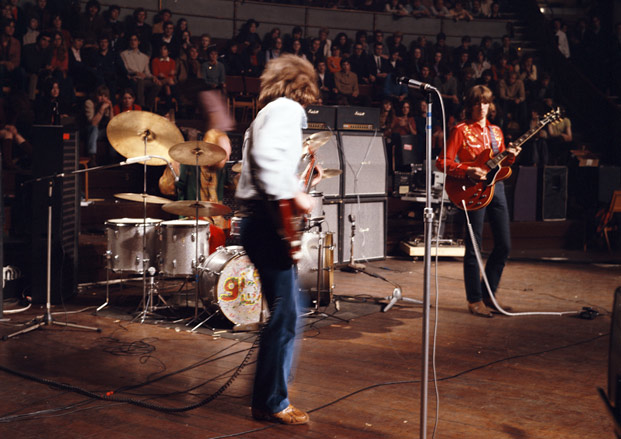
For most of the past five decades, British guitarist Eric Clapton has been at the forefront of blues/rock guitar playing.
Though he has incorporated many different stylistic elements into his music during his long and very successful career, Clapton’s legacy was forged long ago on his brilliance as a virtuoso soloist, and he will long be remembered as one of the most important and influential guitarists ever.
This month we’ll examine that magical period from 1966 to 1968, when Clapton established the standard for modern blues and rock guitar with his incendiary work with John Mayall’s Bluesbreakers and Cream—back when he was commonly referred to by the modest nickname God.
Though Clapton initially gained recognition with the Yardbirds, with whom he played from October 1963 through March of 1965, his work with the Bluesbreakers established him as one of the best guitarists of the day. His inspired performance on the 1966 classic Blues Breakers with Eric Clapton is also noteworthy for introducing a mind-blowing guitar sound.
Armed with his 1960 Gibson Les Paul Standard, plugged into a 45-watt model 1962 Marshall 2x12 combo amplifier, Clapton forged a thick, overdriven sound with tremendous sustain. He routinely turned the amp full up, as he liked to say, “till it was about to burst.” In those days Clapton used light-gauge Ernie Ball Super Slinky strings (.009–.042).

Let’s first look at the scales Clapton relies on primarily for soloing. Following the lead of two of his greatest influences—B.B. King and Buddy Guy—Clapton often alternated between minor and major pentatonic scales in his solos. FIGURE 1a illustrates one of the most commonly used scale positions for G minor pentatonic (B Bb C D F). FIGURE 1b shows a signature Clapton lick based on this scale in this position: it begins with a repeated “unison bend” type lick, as C is bent up one whole step to D on the G string, followed by a fretted D on the B string.
The phrase ends with hammer-ons and pull-offs played in 16th notes, ending with a pair of minor thirds, Bb, which are bent up one half step to the major third, B. Subtle use of minor-third-to-major-third bends is a standard stylistic element of Clapton’s soloing.

FIGURE 1c illustrates an extended position of G minor pentatonic, and FIGURE 2 offers an example of how Clapton moves smoothly between fretboard positions in the creation of improvised melodic phrases.
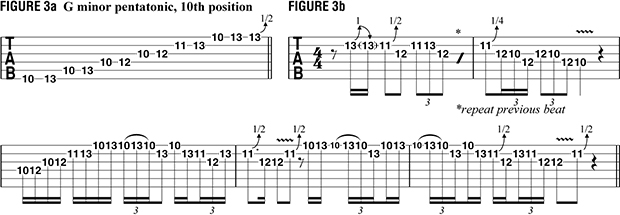
FIGURE 3a shows a fingering for the scale in 10th position, followed in FIGURE 3b with Clapton-esque phrases that utilize this fretboard pattern.


Additional scale fingerings for G minor pentatonic are shown in FIGURES 4, 5a, 6a and 6b. FIGURE 5b offers an example of how Clapton might use the scale position shown in FIGURE 5a in his improvised solos.

As mentioned, Clapton often alternates between minor and major pentatonic scales in his solos. FIGURES 7a and 7b illustrate two standard scale positions for G major pentatonic (G A B D E). In studying both minor and major pentatonic, remember that the intervallic structure of minor pentatonic is 1 b3 4 5 b7 (in G: G Bb C D F), and the intervallic structure of major pentatonic is 1 2 3 5 6 (in G: G A B D E).

FIGURE 7c illustrates solo phrases that are based on the extended position of G major pentatonic and played in Clapton’s style. Our look at scales wraps up with FIGURE 8, which illustrates G major pentatonic in an extended pattern that starts at the 10th fret and ends at the 19th, making it very useful for inventive solo explorations.
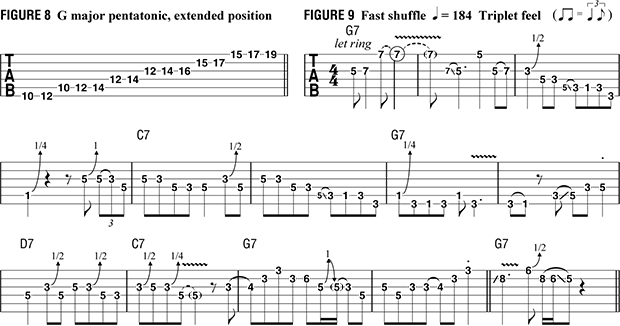
One of Clapton’s best-known Bluesbreakers tracks is the instrumental “Steppin’ Out.” FIGURE 9 is a solo played over a “Steppin’ Out”–style backing track, which is simply a fast 12-bar blues shuffle in the key of G. I begin with sixths—pairs of notes that are six scale degrees apart—on the third and first strings, and for the rest of the 12-bar form I stick between first and third positions, using finger slides to connect the scale positions. Along with subtle bends, I also blur the line between minor and major by quickly hammering from the minor third to the major third, as shown in bars 10 and 12.
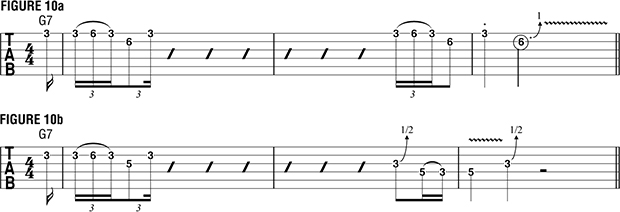
An effective stylistic device of Clapton’s is to use quick hammer-pulls on adjacent strings. FIGURE 10a demonstrates this technique on the top two strings, and FIGURE 10b moves the idea over to the B and G strings. Let’s wrap up with a nod to Clapton’s classic 1968 Cream-era “Crossroads” solo, as shown in FIGURE 11.
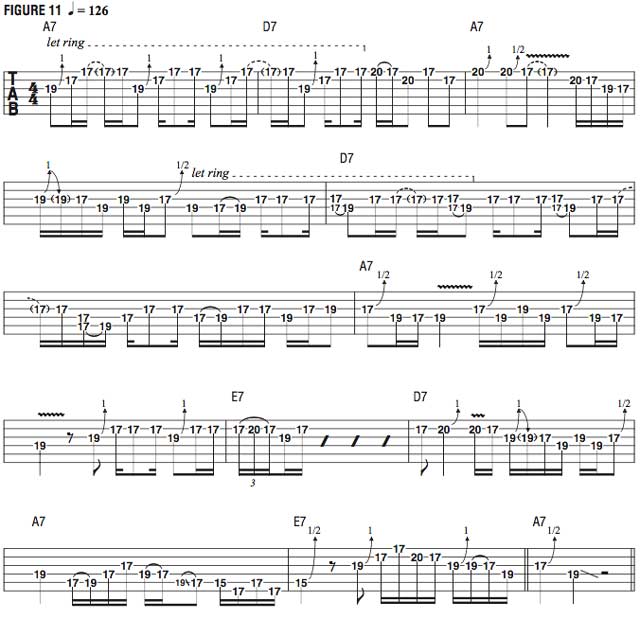
“Crossroads” is a 12-bar blues in A, and this solo is based on A minor pentatonic (A C D E G). Rooted in 17th position, this solo demonstrates how much mileage one can get from a single scale position. Clapton’s Bluesbreakers/Cream–era guitar work offers many valuable lessons that cover all of the ingredients essential to blues-rock soloing: touch, tone, phrasing, musicality and inspiration.
Like all great things, these recordings sound better with age.
Get The Pick Newsletter
All the latest guitar news, interviews, lessons, reviews, deals and more, direct to your inbox!
Guitar World Associate Editor Andy Aledort is recognized worldwide for his vast contributions to guitar instruction, via his many best-selling instructional DVDs, transcription books and online lessons. Andy is a regular contributor to Guitar World and Truefire, and has toured with Dickey Betts of the Allman Brothers, as well as participating in several Jimi Hendrix Tribute Tours.











